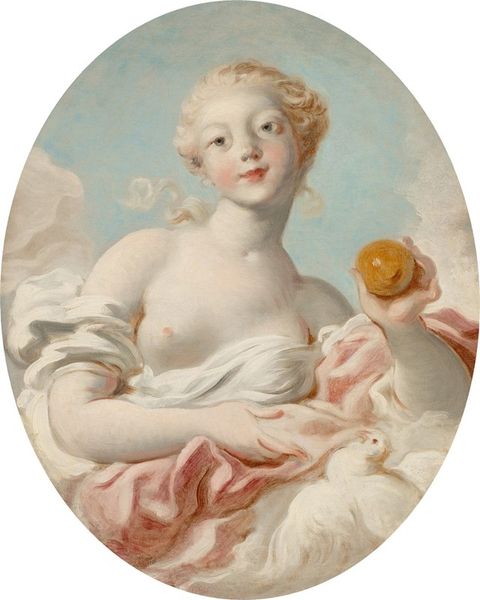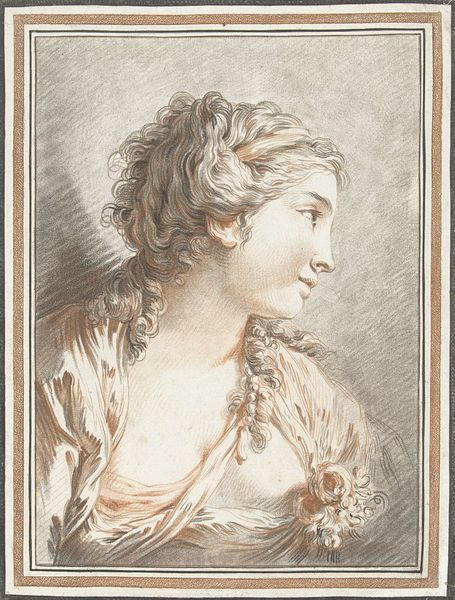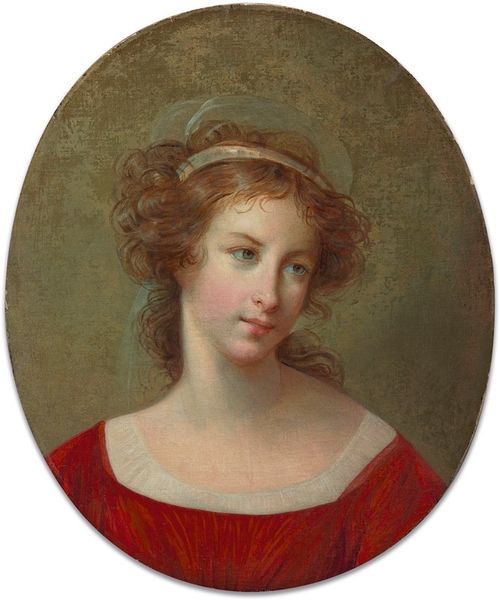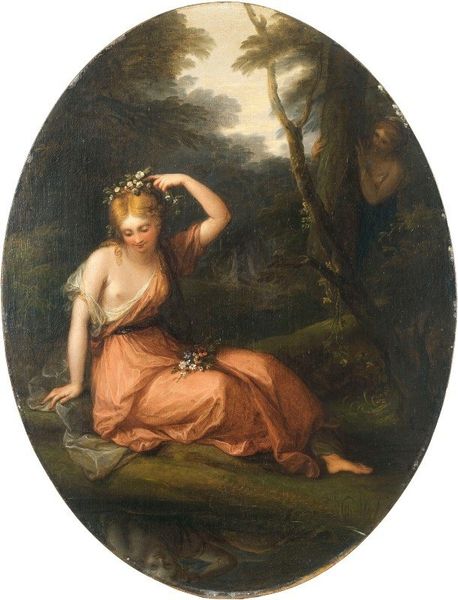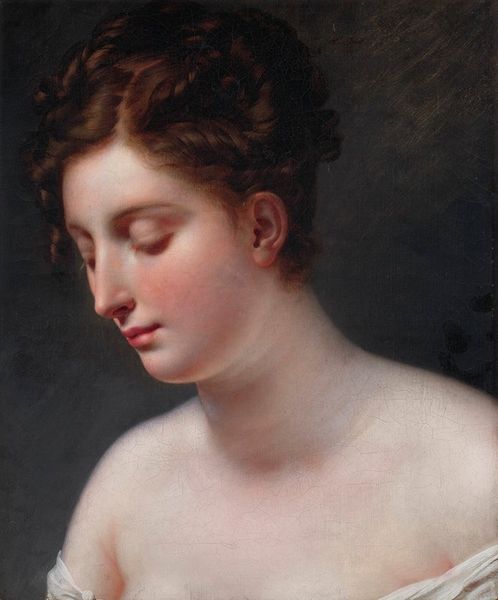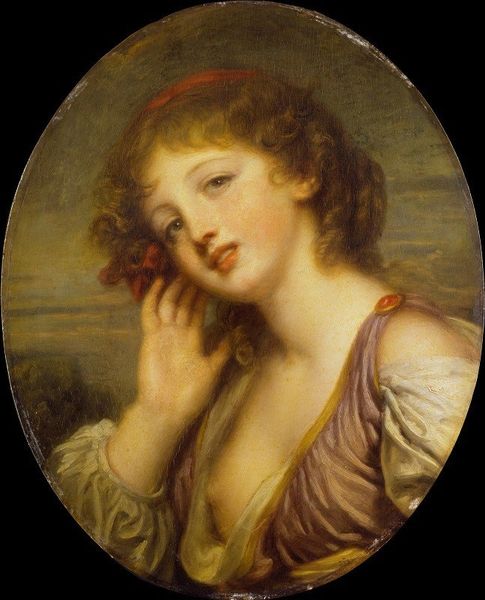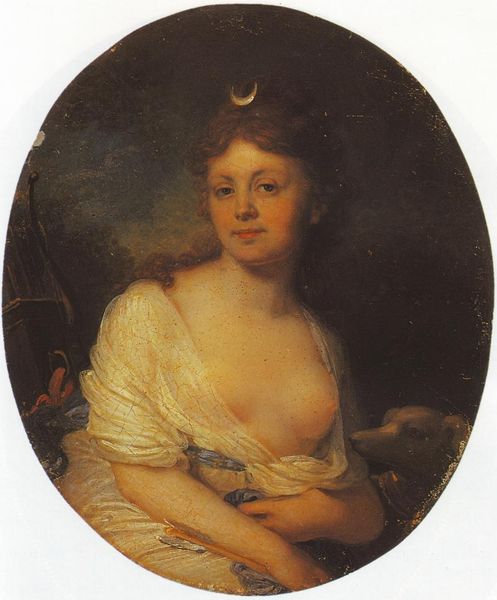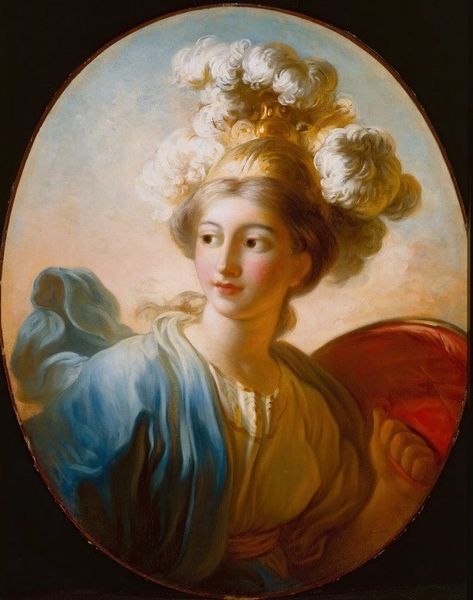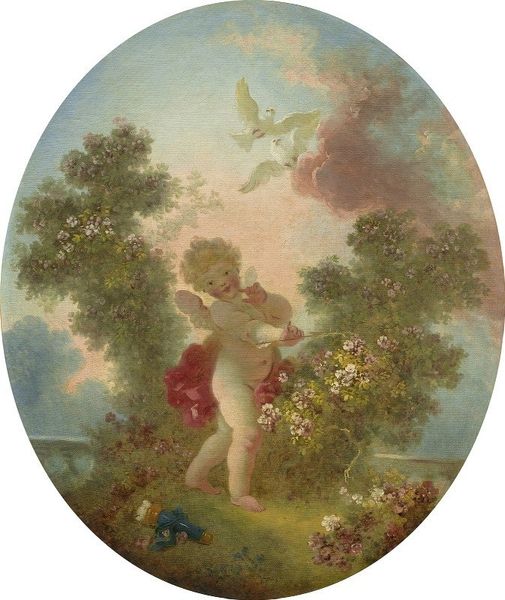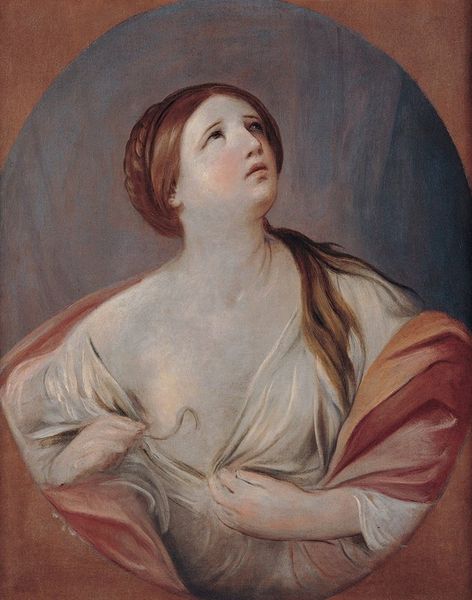
‘L’Amour’; said to be a Portrait of Marie Catherine Colombe c. 1751 - 1830
0:00
0:00
Copyright: Public Domain: Artvee
Curator: Ah, yes, this is 'L'Amour,' believed to be a portrait of Marie Catherine Colombe. Jean-Honoré Fragonard, likely somewhere between 1751 and 1830, captured this image in oil. It’s breathtaking, don't you think? Editor: My initial feeling? Dreamy. All those soft pastels, especially the blues and fleshy pinks, almost melt into each other, like colors bleeding into water. There's a real weightlessness here, like a memory half-recalled. Curator: That dreaminess is a hallmark of the Rococo. But look closer. The figure of Love, the nude Cupid, is almost universally recognizable—but there’s an unexpected softness and ambiguity here that complicates the visual narrative. Editor: Exactly! Usually, Cupid is, well, overtly mischievous or… actively shooting arrows! Here, he’s almost passive. Even the quiver hints, demurely hidden behind his back. It's an internalised version of Love, and is love looking within? Or simply… shy? Curator: I love your insight about an internalisation, and shyness is part of Fragonard’s approach, definitely. This wasn’t necessarily intended as just another representation of Cupid but to express specific passions and sensibilities of a person in this particular depiction. What else does his pose evoke? Editor: Well, his arms are crossed; it's either a defensive or a contemplative gesture. Red drapery is falling loosely over the crossed hands as a promise of what's to come. Given all the symbolic ambiguity, that is not your typical cupid! Also notice the circular composition that adds to that enclosed, introspective mood. Curator: Beautifully articulated. Fragonard was such a master of capturing those subtle, psychological nuances within idealized forms. He painted so much more than beautiful skin. Editor: Precisely! Which begs the question—whose interiority are we really peering into? Is it the sitter's, Fragonard's, or perhaps even…our own? Food for thought. Curator: Indeed. “L’Amour,” isn’t simply a symbol, it’s an open question about ourselves, a tender whisper captured in paint. Editor: And that's precisely why it endures – an invitation to search ourselves with gentleness, compassion and hope.
Comments
No comments
Be the first to comment and join the conversation on the ultimate creative platform.
